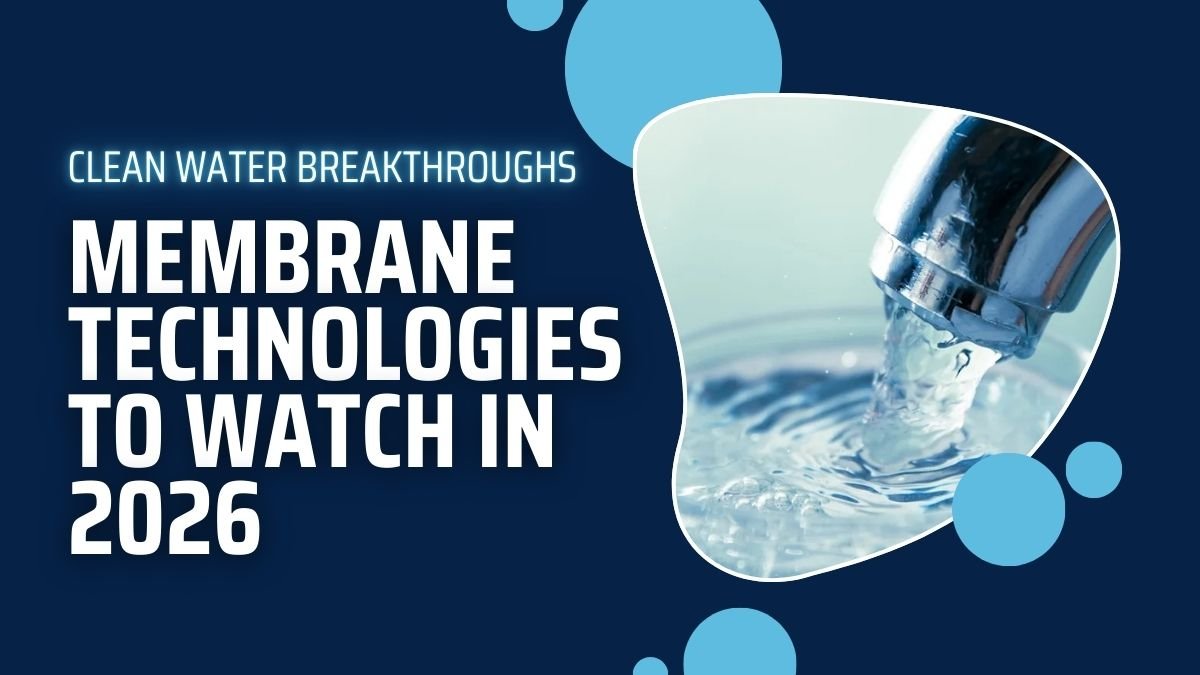Water is the most basic need of life, but its availability is becoming more difficult every year around the world. Factors such as pollution, growing population, climate change and industrial waste have made the problem of clean and safe drinking water more serious. At such a time, membrane technologies are playing a revolutionary role in water purification and recycling. By 2026, many big changes will be seen in this field, which will not only improve water quality but will also increase energy efficiency and sustainability.
AI-Powered Membrane Bioreactors
The biggest change in 2026 will come from the combination of Artificial Intelligence (AI) and Membrane Bioreactors (MBRs). Traditional bioreactors are already useful in purifying wastewater, but they often have limited ability to remove complex pollutants. AI can solve this problem. Machine learning models will continuously monitor the performance of the bioreactor and immediately suggest which changes can be made to improve efficiency even more. This will not only make the water cleaner but will also reduce the energy and cost of the process. The special thing is that the AI system will also predict potential problems in the future, such as membrane clogging or a sudden drop in performance and suggest solutions. This technology can prove to be a major achievement for wastewater management in urban areas.
Nanotechnology-Enhanced Membranes
Nanotechnology has left its mark in almost every branch of science, and water purification is also not untouched by it. In 2026, the use of nano-enhanced membranes will be even more widespread. The specialty of these membranes is that they have nanopores, which capture even the most microscopic pollutants. This means that microplastics, heavy metals, and drug residues can also be effectively removed from water. Nano-enhanced membranes can easily block pollutants that traditional filters are unable to remove. This will not only improve water quality but also reduce health risks in the long term.
Air Bubble Membrane Technology
The air bubble system is emerging as a new and unique discovery in the world of membrane technologies. In this, a thin layer of air bubbles is created on the surface of the membrane. These bubbles help in separating the impurities present in the water and also reduce the chances of dirt accumulating on the membrane to a great extent. This method is considered to be much more effective and energy-efficient than traditional reverse osmosis (RO). Since RO systems consume a lot of energy and demand regular maintenance, air bubble technology can become a solution to these problems. In the future, it can play an important role in desalination of seawater and providing large quantities of pure water.
Smart and Modular Systems
In 2026, water purification systems will become even smarter and more flexible. Modular design means that the membrane system will be divided into smaller units that can be added or removed as needed. This technology will prove to be very useful for small towns, villages and remote areas, where it is difficult and expensive to set up large plants. Apart from this, smart technologies such as IoT (Internet of Things) and sensor-based monitoring systems will make these modules even more effective. This will not only monitor the water quality in real time but also identify any malfunction immediately.
Energy-Efficient Designs
The biggest challenge of membrane technology so far has been its high energy consumption. But in 2026, energy-efficient designs will largely overcome this shortcoming. New membranes are being designed in such a way that they can work at low pressure, which will significantly reduce electricity consumption. Also, many research teams are working on connecting these systems directly to renewable energy sources such as solar energy or wind power. This will not only reduce operating costs but will also have a positive impact on the environment.
Targeting Emerging Contaminants
The biggest concern today is that such contaminants are being found in water that conventional technologies are not able to remove completely. These include microplastics, antibiotics and other pharmaceutical residues. If not controlled, they can cause a serious health crisis. The membrane technologies of 2026 will focus specifically on removing such contaminants. Nanofiltration and AI-based systems will easily capture these microscopic but dangerous contaminants, making water quality even safer and more reliable.
Impact and Benefits on Society and Environment
The biggest advantage of these new membrane technologies will be that people will get more safe and clean water. Energy-efficient design and the use of renewable energy will also reduce the negative impact on the environment. Also, these technologies will promote water recycling and reuse, which will provide great relief in areas facing water crises. These membranes will also provide a sustainable solution for purifying salty water on a large scale.
Conclusion
The year 2026 can prove to be a milestone for membrane technology. With the combination of AI, nanotechnology, air bubble systems, modular design and energy-efficient solutions, water purification will be more effective and sustainable than ever before. These technologies will not only provide solutions to current challenges but will also be ready to deal with future problems. This progress towards clean water is not only essential for human health but is also vital for environmental protection and sustainable development.
